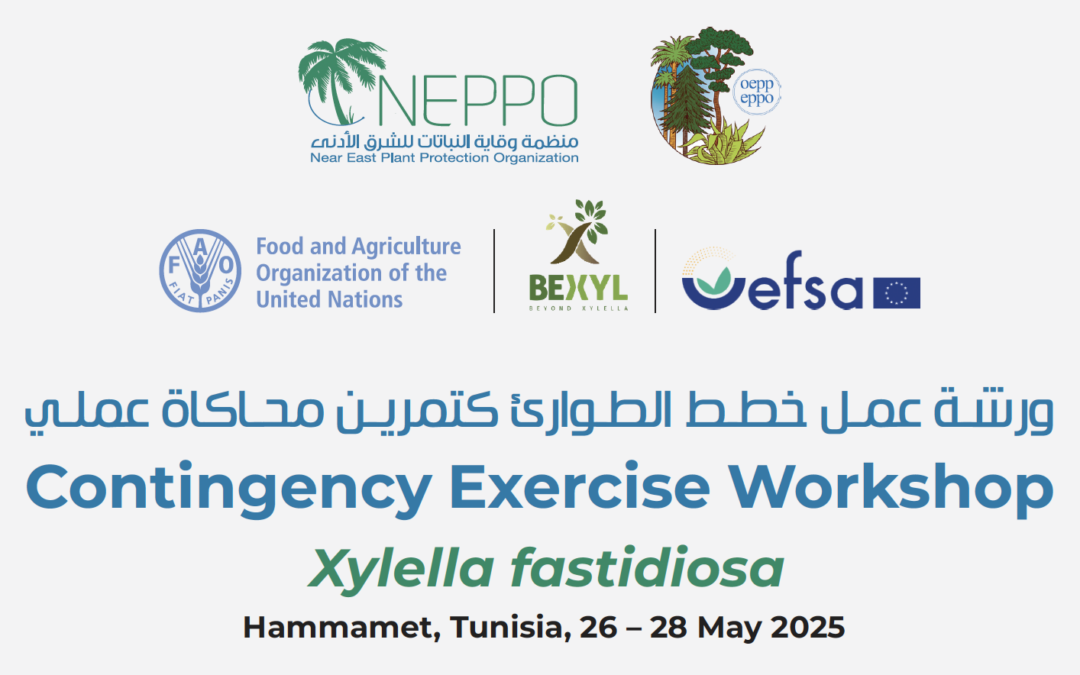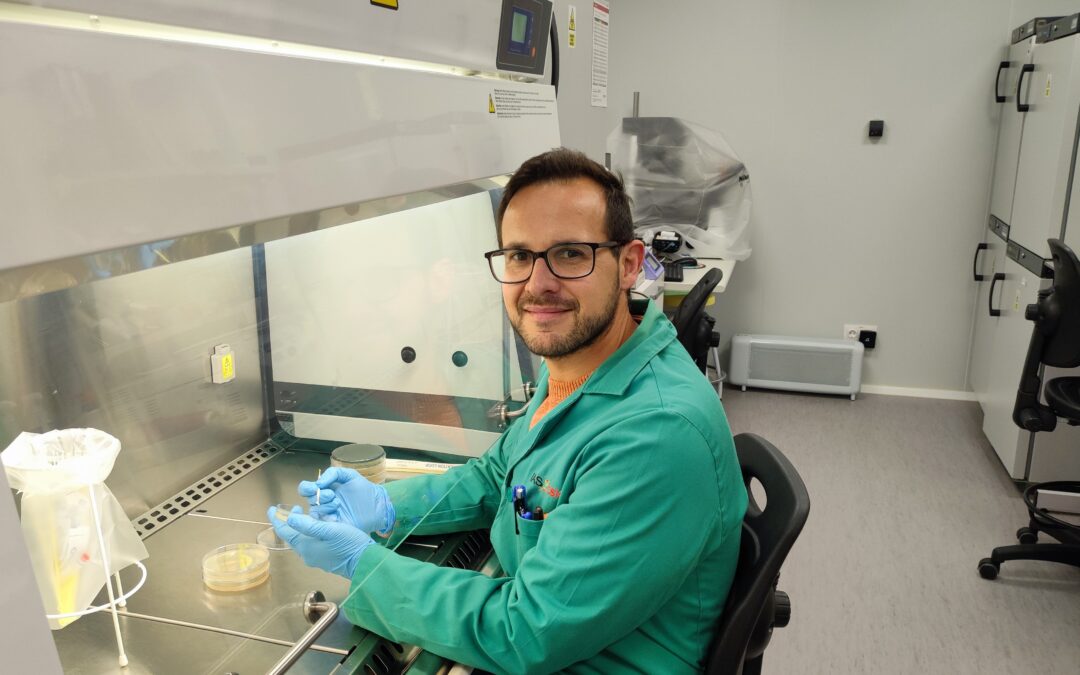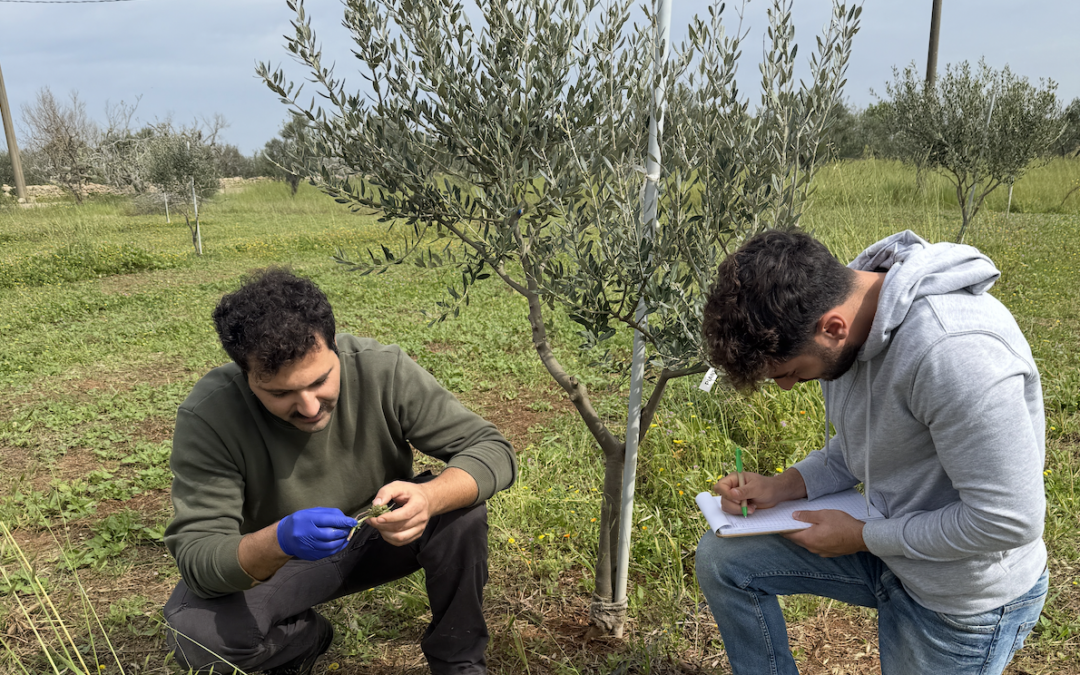In 2017, Xylella fastidiosa was detected for the first time in mainland Spain in a plot of almond trees in El Castell de Guadalest, near Alicante (Comunidad Valenciana). In the area, Xylella fastidiosa mainly affects almonds, causing leaf scorch disease. Since 2017, more than 240,000 trees, mainly almond, have been removed from the infected area.
The ongoing eradication campaign in Alicante is one of the largest ever in the EU.
Managing a phytosanitary emergency such as the Xylella fastidiosa outbreaks in Europe means acting on many fronts.
To understand the complexity of this undertaking, we spoke to Vicente Dalmau, Head of the Plant Health Service at the Generalitat Valenciana.
First, what is the current situation of the outbreaks in Alicante?
Following the approach agreed by the EU and national and local institutions, since June 2017, we have demarcated an area of 145,000 hectares covering 80 municipalities. The positive plants and those within a 50m radius resulted in an infected area of 3,200 ha. We collected more than 85,000 samples, of which 5,540 plants belonging to 26 different plant species tested positive for Xylella fastidiosa subspecies multiplex ST6. Prunus dulcis (almond) is the main positive species, accounting for 90% of positive tests.
Plants on 3,000 hectares have already been eradicated, 240,000 trees removed – mainly almonds – and 3,950 hectares treated with pyrethroids, the insecticides used, to control the vector population.
One hundred forty people are working on all these tasks. Since the first detection, €35 million have been spent on Xylella-related work in the Valencian Community. The money has come from the Generalitat Valenciana, the Spanish Ministry of Agriculture and the EU.
Subsidies are also being paid to farmers to compensate them for eradication work and to help them replant with non-host species.
Around €9,5 million has been earmarked for investment in biosecurity measures at nurseries, such as thermotherapy facilities and physical protection against vectors. Of the total, around 6,7 are from public subsidies, and the support for nurseries is funded by the EU’s Next Generation Recovery and Resilience Facility.
What are the critical actions for a risk manager to manage plant health emergencies like the one in Alicante?
Dealing with an EU-priority pest outbreak is a tough job, so I would say that prevention is the best way to tackle these emergencies. Investing in preventive measures gives the best return for the sector potentially affected. Early detection and rapid response are crucial to successful eradication. Awareness-raising and communication activities for growers and the public are also essential to adopting phytosanitary measures.
It is also necessary to be prepared for an outbreak, so contingency plans and simulation exercises before an outbreak occurs are key to ensure a rapid response. In our case, Spain adopted a contingency plan against Xylella fastidiosa in June 2015, and the Valencian authorities adopted theirs in July 2016, before any Xylella detection. But this was not enough.
Obviously, in an outbreak, it is also essential to have sufficient financial resources and flexible legislation to speed up administrative procedures in emergencies.
It’s also necessary to have a broad and good range of information sources on crops and host distribution, potential entry points, nurseries, other places at risk, and a good description of the area. All these factors are essential to make the right decisions and implement the necessary measures to eradicate the pest and prevent it from spreading.
What kind of science does a risk manager need in these situations?
The role of science is fundamental. Many uncertainties about Xylella fastidiosa still need to be resolved by science. For example, finding resistant or tolerant varieties or alternative crops for infected areas, suggesting more effective surveillance methods and new ways to control the vectors population, and possible treatments to control Xylella fastidiosa.
Science has made a tremendous contribution to tackling the emergency, but there is still much to be done.
What was the reaction from farmers and citizens?
In the case of Alicante, since the very beginning, farmers and citizens were against the phytosanitary measures. In my opinion, they were not conveniently informed or advised beforehand, so they started to react against these measures.
We started to find barriers to access the farms, closed roads; then we received thousands of administrative appeals, we processed hundreds of court authorisations to perform phytosanitary measures in orchards with physical access restrictions, we were involved in 17 court cases; and after that, we suffered vandalism, demonstrations, and finally political pressure to stop our activities.
How essential is keeping the scientists’, farmers’, and citizens’ perspectives together? How did you manage to do this in this specific case?
I believe stakeholders’ engagement is crucial to successfully applying all these measures in due time. Even if we organised several communication activities before the outbreak, we should have carried out more intense awareness campaigns. Dissemination of accurate information is crucial to prevent fake news from spreading, and here is where scientists play an essential role. Based on our experience with other countries facing new outbreaks, the existence of Grower Liaisons and networks can make some difference.
What are the grower liaisons?
The California program to tackle Huanglongbing, or cirtrus greening disease, is using seven persons called “grower liaisons”, each one is responsible of a different county. Those individuals are the growers’ main point of contact for information and updates on activities occurring in their region.
In our case, growers liaisons would have helped us engage with stakeholders and curb some socially adverse reactions. Growers’ liaisons would have disseminated outreach and education materials to the growers and landowners to facilitate coordinated area-wide actions and provide other support as needed.








